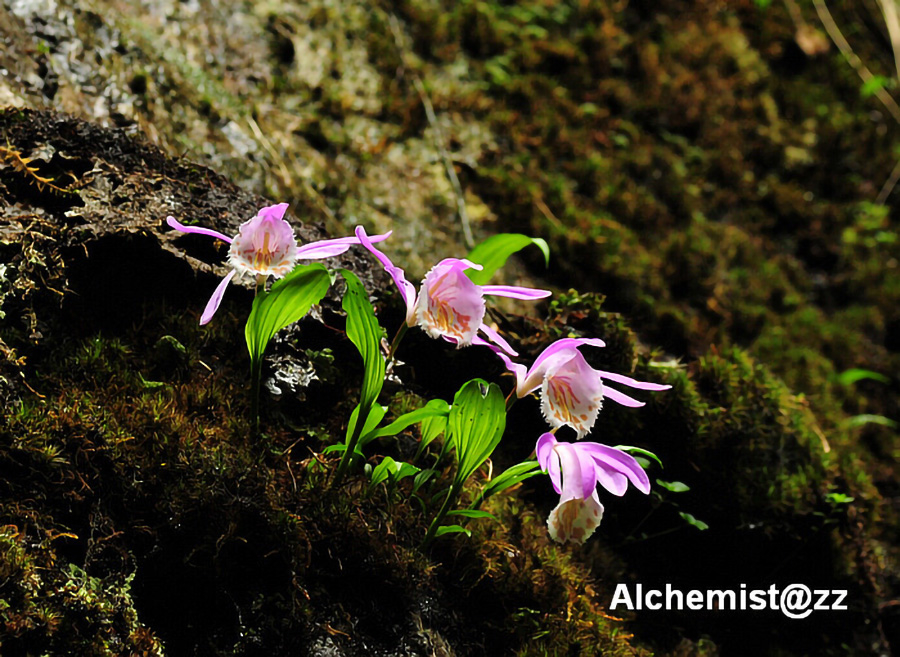- Scientific Name: Pleione formosana Hayata
- Ref: J. Coll. Sci. Imp. Univ. Tokyo. 30(1):326. 1911
- Synonyms: Pleione bulbocodioides var. nivea (Fukuy.) S.S.Ying; P. formosana f. alba Torelli & Riccab.; P. hui Schltr.; P. pricei Rolfe
- English Common Name: Taiwan pleione, windowsill orchid
- Chinese Common Name: 台湾独蒜兰 táiwān dúsuànlán
- Japanese Common Name: タイリントキソウ [大輪鴇草/大輪朱鷺草] tairintokisō
- Family: Orchidaceae
- Genus: Pleione
- Distribution: Humus-covered soil, on rocks in montane forests and at forest margins; 600-1500 m (1500-2500 m in Taiwan). N and W Fujian, SE Jiangxi, Taiwan, S Zhejiang.
- Photo: Mt. Dapan, Zhejiang
Herbs, lithophytic, epiphytic, or terrestrial. Pseudobulb green or dark purple, compressed ovoid or ovoid, 1.3-4 × 1.7-3.7 cm, 1-leaved. Leaf immature or developing at anthesis, elliptic or oblanceolate, 10-30 × 3-7 cm, papery, base attenuate into a petiole-like stalk 3-4 cm, apex acute or obtuse. Inflorescence erect; peduncle 7-16 cm, with 2 or 3 membranous sheaths at base; floral bracts linear-lanceolate to narrowly elliptic, 22-40 mm, apex acute. Flowers solitary or rarely 2, sometimes slightly fragrant, rose-pink or occasionally white, lip often yellowish with reddish or brownish marks; pedicel and ovary 15-27 mm. Dorsal sepal narrowly elliptic-oblanceolate or spatulate-oblanceolate, 42-57 × 9-15 mm, apex acute; lateral sepals narrowly elliptic-oblanceolate, slightly oblique, 40-55 × 10-15 mm, apex acute or subacute. Petals linear-oblanceolate, 42-60 × 10-15 mm, apex subacute; lip broadly ovate-elliptic to orbicular when flattened, 40-55 × 30-46 mm, obscurely 3-lobed, apical margin lacerate, apex emarginate; disk with 2-5 entire or erose lamellae; lamellae usually interrupted along their length, central one (when present) shorter than others. Column 28-42 mm, apex obscurely toothed. Capsule dark brown, fusiform, ca. 40 mm. Fl. Mar-Apr. 2n = 38*, 40*, 40 + 2B*, 42*. (Flora of China)
